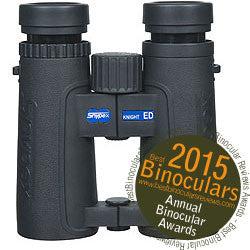Your Cart is Empty

Copied from Article | Posted by Best Binocular Reviews
In recent years we have seen a huge increase in the amount of binoculars that use ED Glass (Extra Low Dispersion Glass) in their lenses. What used to be found only on a few of the very top end “super” binoculars, is now quite common and is used on a whole range of binoculars, even fairly low cost ones.
So with so many manufacturers using ED Glass, do you know what it rally means, why it is used and how does it help improve the view through your optics? Well if not, I will try and answer those questions in this article, but it can get a little technical, so hold onto your hats, but stick with me as it is kind of cool and I will try to explain it to the best of my knowledge and as simply as I can:
To get started and before we can talk about how one type of glass is better than another, lets first figure out what dispersion is and what it means in the world of optics:
As most people, especially the Pink Floyd fans among us will know, if you pass light through a prism, it will break white light up into its component colors. The blue end of the spectrum is bent the most, and the red end is bent the least.
So the prism spreads or disperses out the colors that make up white light and dispersion is a simply a measure of how much the colors are spread out.
The lenses on your binoculars are used to focus the light they capture onto a single point. However like the prism, a small amount of dispersion occurs as the light passes through the lens and the different wavelengths of light are focused to slightly different positions. This distortion is known as chromatic aberration and is seen as fringes of colour around the image produced and is known as colour fringing.
The image above demonstrates the color fringing around the edges of the flower, seen when looking at it through a lens with chromatic aberration.
There are certain situations when it is preferable to split the wavelengths of light, but obviously this color fringing in not ideal on a pair of binoculars and so being able to gather up all these different wavelengths of light and focus them on a single point is what you want your objective lenses to achieve.
So it stands to reason that by Reducing the Dispersion – it will reduce the amount of chromatic aberration – which in turn will reduce the amount of color fringing around the image.
There are a number of ways that this can be done and sometimes as you will see below, a combination of some of them produces the best results:
Compound Lenses
A single or simple lens that consists of a single optical element cannot compensate for chromatic aberration, so compound lenses are used which are made up of a number of lens elements that have different optical characteristics and therefore disperse the wavelengths of light differently. These are then bonded together to form a single lens and which, if designed very cleverly can help to correct this aberration.
Achromatic Doublet
The most common type of compound lens used to reduce chromatic aberration in the objective lenses of binoculars has two lens elements with differing dispersion properties and is known as an achromatic doublet (or achromat). A typical “standard glass” achromat is made of a low dispersion crown glass and a high dispersion flint glass.
However, whilst an achromatic doublet is a big step forward when compared to a simple lens as it reduces the amount of chromatic aberration over a certain range of wavelengths, they do not produce perfect correction.
The advantages of this design over an Apochromatic lens (see below) is that due to having less elements, it is easier to make, cheaper, weighs less and is more compact. Also worth noting is that with the advent of ED (extra low dispersion) glass elements, a well designed Achromat with ED glass can near the performance of an APO lens in terms of reducing chromatic aberrations.
Apochromatic Lens ( APO )
An apochromat, or apochromatic lens or lens system usually consists of three elements and brings light of three different frequencies to a common focus. These can produce even better correction of chromatic aberration, combined with improved correction of spherical aberration than the achromatic doublet can.
Low Dispersion Glass (ED Glass)
Lens Materials
However this is not where the story ends as different lens materials such as specialised coatings or lenses made from different types of glass may also be used to minimise chromatic aberrations.
As we have seen, an achromatic lens made with conventional glass materials can match focal lengths of two different wavelengths, so red and blue colors at both ends of the wavelengths of visible light for example. The chromatic aberration can be reduced to a certain extent by conforming their focal lengths. However, because light with other wavelengths such as green has different focal lengths, you still get some residual chromatic aberration which is known as secondary spectrum.
Will Talk about the Apochromatic ( APO) Lenses in Binoculars in our next blog.
WWW.SNYPEX.COM
INFO@SNYPEX.COM
Comments will be approved before showing up.
WilliamLifs
May 12, 2016
Im grateful for the post. Fantastic. Shain